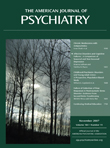John R. Searle, a preeminent philosopher of the mind, has produced a volume of particular significance for psychiatrists. For those familiar with Searle’s work, these essays incorporate recent developments in neuroscience into his most comprehensive engagement with the problem of free will to date. For those unfamiliar with Searle, this book is an important gateway to his thoughts.
In addition to the two main essays, “Free Will as a Problem in Neurobiology” and “Social Ontology and Political Power,” Searle has added a highly accessible introduction which helps to situate these two lectures within the context of his larger project—namely, how to reconcile the appearance of a completely determined and material universe with an enduring conception of ourselves that contradicts this scientific view. As Searle succinctly puts it, “How can we square this self-conception of ourselves as mindful, meaning-creating, free, rational…agents with a universe that consists entirely of mindless, meaningless, unfree, nonrational, brute physical particles?” (p. 5).
The introductory essay, “Philosophy and the Basic Facts,” is an excellent review of the current state of philosophy of the mind, stressing how recent developments in science have transformed the task of philosophy. In essence, increased knowledge about the external world has driven philosophy itself to become more empirical. Philosophers now know a series of basic facts about the world from which to reason and question. As Searle points out, “It is hard to send men to the moon and bring them back and then take seriously the problem, for example, of whether the external world really exists” (p. 28).
Searle applies this approach to a central problem for psychiatrists: free will. A dilemma is created by the possibility of too much or too little freedom. What if our patients were radically free (i.e., free of any genetic, developmental, or environmental influence)? Psychiatry in general does not take the possibility of radical freedom seriously, since too many basic facts argue against it. On the other hand, if our patients’ thoughts and behaviors are completely predetermined, then how do we conceptualize the subjective experience of freedom? And in what meaningful sense can treatment be said to bring about change if one has no freedom? Despite these challenges, the possibility that our patients’ actions are completely predetermined remains an unsavory yet viable hypothesis that may grow in popularity with additional neurobiological discovery.
Enter into this dilemma John Searle and his concept of the “gap.” Considering cases of rational deliberation, Searle tells us “there is, in short, a gap, or a series of gaps, between the causes of each stage in the processes of deliberating…and the subsequent stages,” and that “at each stage [in a deliberation], the conscious states are not experienced as sufficient to compel the next conscious state” (p. 42; italics added). According to Searle, it is the “conscious experiences” of these gaps that give us “the conviction of free will” (p. 45). Searle comes down squarely on the side of those who believe in freedom of will and that freedom of will makes change possible.
For psychiatrists and neuroscientists, many questions are raised by Searle’s assertion of a gap between antecedent causal conditions and conscious states. How large is the gap? Can it change over time and with development? Is it influenced by unconscious processes? And most importantly for psychiatrists, do some patients suffer from what is essentially a confined or restrained gap, which severely limits their choices?
Space constraints do not allow even a preliminary sketch of the possible answers to these questions, but clearly any psychiatrist who attempts to increase the scope of patients’ choices would do well to explore Searle’s concept in more detail. It is our contention that in most patient encounters it is precisely the presence of this gap that makes work on its influences (including the unconscious) possible.
Many psychiatrists may shy away from philosophical discourse, viewing it as either irrelevant to their practice or as simply too much rough sledding, just a series of overly complex arguments with little or no benefit to them in their treatment of the mentally ill. Searle’s style is different! He shuns jargon, and although his writing may at times be complex, it never becomes obscure. Philosophical arguments are supported by easily understandable, everyday examples. For those of us interested in being able to better frame what it is we are doing when we treat our patients, reading Searle is an indispensable source of insight and thoughtful provocation. Whether you ultimately agree with him or not, the book is well worth your time.

